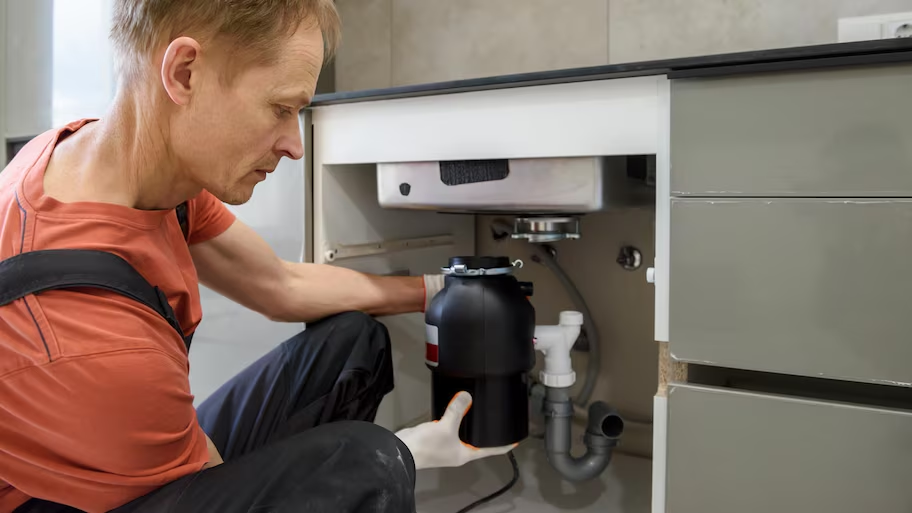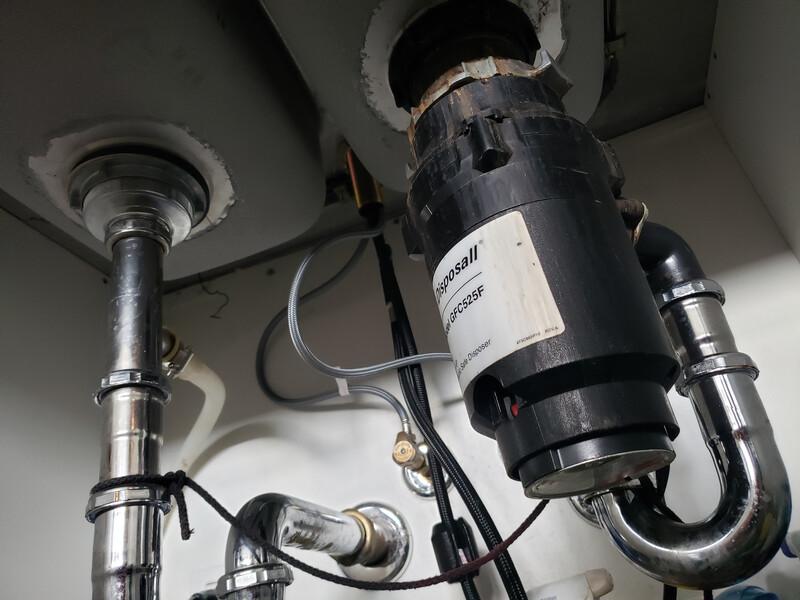Straightforward Instructions for Repairing a Leaky Waste Disposal
Straightforward Instructions for Repairing a Leaky Waste Disposal
Blog Article
What are your opinions on Tips on Fixing a Leaking Garbage Disposal?

Waste disposal unit are necessary kitchen home appliances that help in taking care of food waste effectively. However, a dripping garbage disposal can be an aggravating and messy trouble to handle. Luckily, several leaks can be dealt with quickly with a couple of simple actions. In this article, we will review how to repair a dripping garbage disposal successfully.
Intro
Garbage disposals are set up under cooking area sinks and are developed to shred food waste into smaller sized pieces, allowing it to pass through the plumbing system conveniently. While these devices are typically trustworthy, leakages can happen with time due to deterioration, loosened links, or damages to the unit.
Step-by-Step Guide to Dealing With a Leaking Garbage Disposal
Shut off the Power
Prior to attempting any repair services, make certain that the power to the garbage disposal system is switched off to stop the risk of electric shock.
Find the Leakage
Recognize the exact location of the leak and determine the cause
Tighten up Links
Use a wrench to tighten up any type of loose links in between the disposal device and the plumbing system.
Replace Seals or Gaskets
If the leakage is due to worn seals or gaskets, remove the old elements and replace them with brand-new ones.
Patching Splits or Openings
For splits or openings in the disposal device, usage epoxy or an ideal patching product to secure the broken location.
Recognizing the Resource of the Leakage
Prior to trying to repair a dripping garbage disposal, it is necessary to determine the source of the leakage. This can typically be done through visual inspection or by performing easy tests.
Visual Evaluation
Inspect the garbage disposal device meticulously for any type of signs of water leakage. Pay close attention to areas around seals, gaskets, and connection points.
Checking for Leakages
One means to check for leaks is by running water through the disposal unit and looking for any kind of visible signs of leakage.
Usual Sources Of Leakages in Rubbish Disposals
Worn Seals and Gaskets
Seals and gaskets play an important function in avoiding water from dripping out of the waste disposal unit. With time, these parts can deteriorate, bring about leakages around the disposal unit.
Loose Connections
The connections in between the garbage disposal and the plumbing system can come to be loose with time, creating water to leakage out throughout operation.
Splits or Holes in the Disposal Unit
Physical damages to the waste disposal unit, such as splits or holes in the housing, can also lead to leakages.
Tools and Products Needed for Repairing a Leaking Waste Disposal Unit
Prior to starting the fixing process, collect the needed tools and products, including a screwdriver, flexible wrench, plumbing professional's putty, substitute seals or gaskets, and epoxy or patching product for repairing fractures or openings.
Evaluating the Garbage Disposal After Repair Service
As soon as the repair work is full, check the garbage disposal by running water through it to make sure that the leakage has been resolved.
Preventive Maintenance Tips to Stay Clear Of Future Leakages
To prevent future leaks, it is necessary to do routine maintenance on your waste disposal unit. This consists of keeping it clean, preventing putting non-food products or hard objects down the disposal, and periodically looking for leaks or various other concerns.
Final thought
In conclusion, repairing a leaking garbage disposal is a reasonably straightforward procedure that can be completed with fundamental devices and materials. By following the actions laid out in this article and practicing preventative upkeep, you can maintain your garbage disposal in good working problem and avoid costly repair services in the future.
What to Do About a Leaking Garbage Disposal
A leaking garbage disposal often goes unnoticed until you confront a sopping cabinet, a foul-smelling puddle, or an audible drip-drip-drip from the unit. The fix can be frustrating, too, because the leak can stem from a number of components in the system. Fortunately, with a little sleuthing, you can zero in on the leak and—depending on the exact location—stop the icky oozing and repair the component that caused it. Worst case scenario, if it turns out that the garbage disposal must be replaced, installing a new one is a reasonable do-it-yourself task for those with basic plumbing skills. Read on to keep the cash you’d otherwise hand over to a pro.
Prepare to find the leak
Prior to testing the garbage disposal for leaks, unplug it at the wall outlet and turn off the power from the breaker box to prevent electrical shock. Then insert a watertight sink stopper into your sink drain and wipe the unit dry with a clean cloth. In any handy container, mix a few drops of food coloring into a few cups of water, and pour the dyed water onto the sink stopper to help you locate the leak.
Investigate the source
the top, where the disposal meets the sink drain the side, where the dishwasher hose or main drain pipe connects to the disposal or the bottom of the unit Inspect each of these locations while gliding a light-colored rag over the unit; the dyed water will readily show on the rag and reveal the location of the leak. If a leak isn’t immediately apparent, remove the sink stopper and pour a few more cups of dyed water down the sink drain, then check for leaks again. Leaks near the top of the unit are more likely to show themselves while the sink is plugged, while side and bottom leaks are more noticeable while the sink is unplugged.
The metal sink flange that sits directly inside the sink drain is typically sealed around the top with plumber’s putty (a clay-like sealant) and then secured from under the sink with bolts. If the plumber’s putty deteriorates, or the bolts loosen, the flange can no longer form a watertight seal between the sink drain and the disposal—which could cause a leak at the top of the unit.
To reseal the leaky flange, you must first detach the garbage disposal. Start by loosening the screws securing the main drain pipe to the disposal, then loosen the screws in the metal clamp securing the dishwasher hose to the disposal and detach the drain pipe and dishwasher hose from the disposal. Loosen the screws in the mounting ring that connects the disposal to the metal mounting assembly beneath the sink, then pull down the disposal and carefully set it on a clean, dry surface. Loosen the bolts in the mounting assembly with a wrench, then pull down the mounting assembly and set it near the disposal.

As a fervent reader on Tips on Fixing a Leaking Garbage Disposal, I was thinking sharing that piece of content was beneficial. Those who enjoyed our blog posting please remember to pass it around. Thank you so much for taking the time to read it.
Click Here Report this page